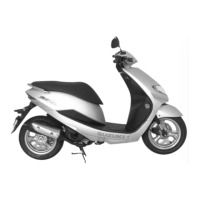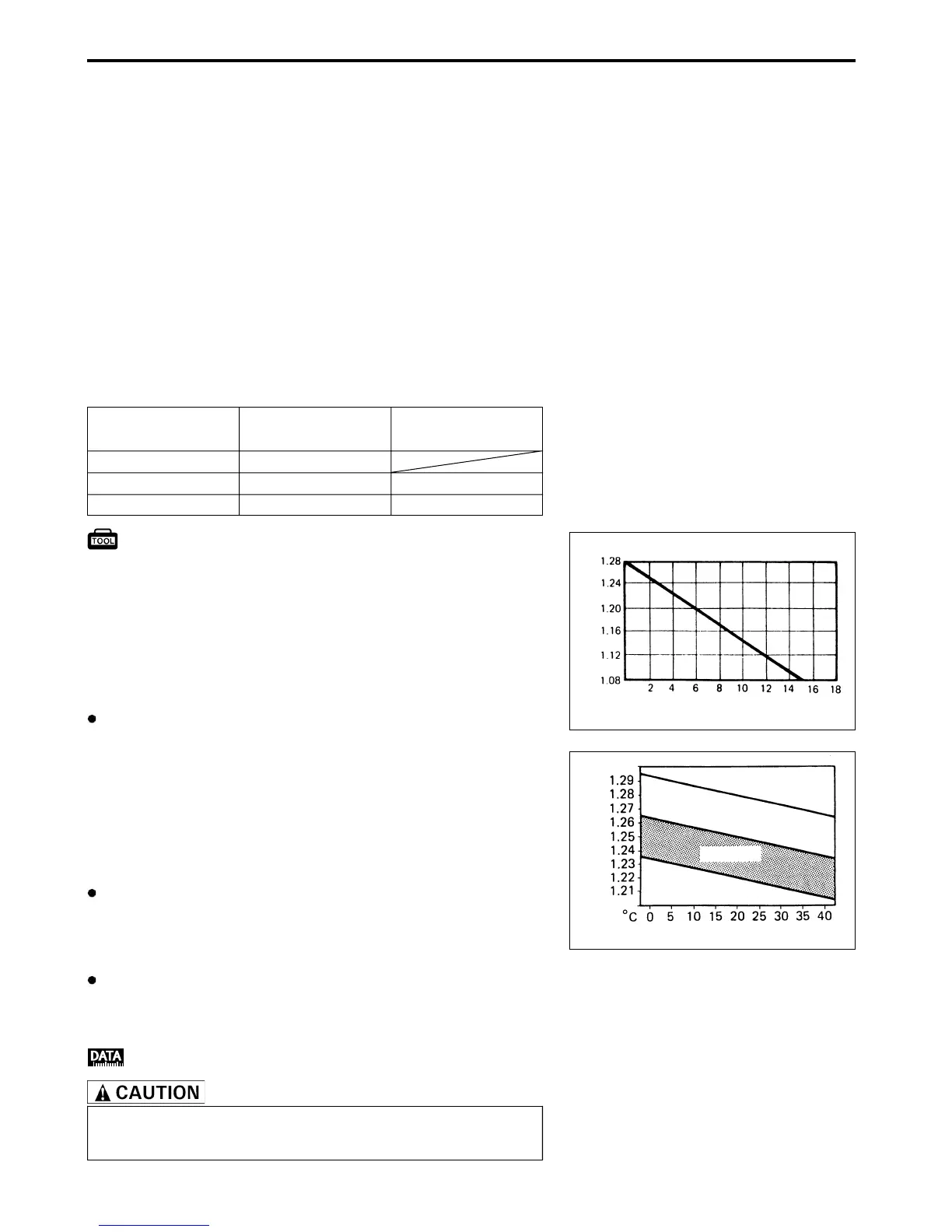6-32 ELECTRICAL SYSTEM
SERVICING
Visually inspect the surface of the battery container. If any signs
of cracking or electrolyte leakage from the sides of the battery
have occurred, replace the battery with a new one. If the battery
terminals are found to be coated with rust or an acidic white
powdery substance, clean the battery terminals with sandpa-
per.
Check the electrolyte level, and if necessary, add distilled water
to raise the electrolyte level, for each cell, to the UPPER LEVEL
line.
Use a hydrometer to measure the electrolyte specific gravity read-
ing. If the reading is 1.22 or less, as corrected to 20°C, this indi-
cates that the battery needs to be charged.
Specific gravity
Condition Measure
at 20°C
1.250 – 1.280 Normal
1.220 – 1.250 Under charged Charge
Below 1.220 Run down
Charge or replace
09900-28403: Hydrometer
RECHARGING OPERATION
NOTE:
When charging the battery, be sure to remove the battery from
the motorcycle to protect the regulator/rectifier against exces-
sive voltage.
Use the following formula to correct the specific gravity read-
ing to 20°C.
S20 = St + 0.0007 (t-20)
Where S20 = corrected value of specific gravity
(20°C)
St = value of specific gravity read at temperature t°C
0.0007 = temperature coefficient of specific gravity
t = temperature in degrees centigrade at which St was read.
Check the corrected specific gravity reading with the chart, to
determine the charging time in hours. This is when a con-
stant-current charge at a rate of 0.4 amperes (which is a tenth
of the capacity of the present battery) is used.
When charging the battery, do not allow the electrolyte tem-
perature to exceed 45°C. Interrupt the operation, as neces-
sary, to let the electrolyte cool down.
Electrolyte specific gravity: 1.280 at 20°C
Do not quick charge the battery. Quick charging will
shorten the life of the battery.
Charging time (hour)
Specific gravity at 20°C
Temperature
Specific gravity
Recharge
Normal
Recharge or replace

